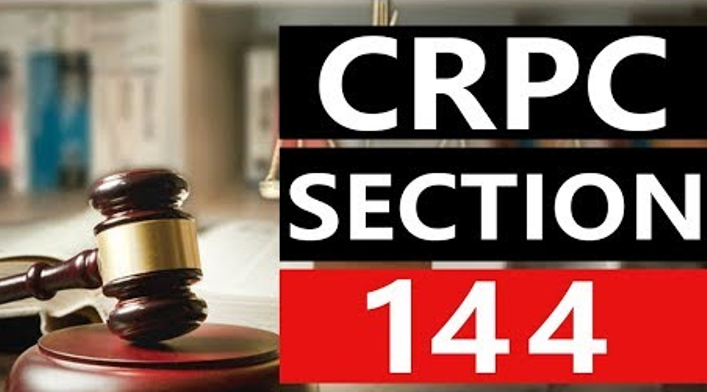Section 144 of the Code of Criminal Procedure (CrPC)
Section 144 of the Code of Criminal Procedure (CrPC), 1973
Introduction
Section 144 of the Code of Criminal Procedure (CrPC), 1973 grants executive magistrates the power to issue orders in urgent cases of nuisance or apprehended danger. This section is primarily used to maintain public order and prevent potential threats to peace and security. It allows authorities to impose restrictions on gatherings, movements, and activities in a specific area for a certain period.
Key Provisions of Section 144 CrPC
-
Power of the District Magistrate (DM), Sub-Divisional Magistrate (SDM), or Other Executive Magistrate
- The District Magistrate (DM), Sub-Divisional Magistrate (SDM), or any other Executive Magistrate authorized by the state government can issue orders under this section.
-
Urgent Situations Requiring Immediate Action
- Orders can be issued when there is an urgent need to prevent danger to human life, health, safety, or property.
- This includes preventing riots, unlawful assemblies, and potential threats to peace and security.
-
Scope of Orders
- Orders under Section 144 can be directed at a particular individual or the public in general.
- Restrictions may include:
- Prohibition on the assembly of five or more persons (used to impose curfews).
- Ban on carrying weapons in public places.
- Restriction on processions, demonstrations, or protests.
- Control over the use of loudspeakers, drones, or social media messages that may incite violence.
-
Time Limit of the Order
- The initial order cannot exceed two months.
- However, in exceptional cases, the state government can extend it up to six months if necessary.
When is Section 144 CrPC Imposed?
Authorities impose Section 144 in situations such as:
- Riots, Communal Violence, or Political Unrest – To prevent clashes and maintain peace.
- Terror Threats and National Security Risks – To restrict movement and public gatherings.
- Epidemics or Health Emergencies – To enforce quarantine and control disease spread (e.g., during the COVID-19 pandemic).
- Examinations and Public Safety Concerns – To prevent cheating or unlawful activities during government exams.
- Curbing Fake News & Misinformation – To stop the spread of provocative content on social media.
Punishment for Violating Section 144
- Violation of an order issued under Section 144 is punishable under Section 188 of the Indian Penal Code (IPC), 1860.
- Punishment includes:
- Imprisonment – Up to six months, or
- Fine – Up to ?1,000, or
- Both imprisonment and fine, depending on the severity of the violation.
Landmark Judgments on Section 144 CrPC
1. Babulal Parate v. State of Maharashtra (1961)
- The Supreme Court upheld the constitutional validity of Section 144, stating that it is meant for public safety.
2. Madhu Limaye v. Sub-Divisional Magistrate (1970)
- The Court ruled that Section 144 should only be imposed in cases of emergency and should not be used arbitrarily.
3. Anuradha Bhasin v. Union of India (2020)
- The Supreme Court held that freedom of speech and internet access cannot be curtailed indefinitely under Section 144.
- Authorities must justify the necessity and proportionality of restrictions.
Difference Between Section 144 CrPC and Curfew
| Feature |
Section 144 CrPC |
Curfew |
| Nature |
Prohibits unlawful assembly and movement. |
Restricts people from stepping out entirely. |
| Restrictions |
Prohibits gatherings of five or more people. |
Everything is shut down, including markets, schools, and offices. |
| Imposition Authority |
District Magistrate, Sub-Divisional Magistrate. |
Higher authorities (State/Central Government) in extreme situations. |
| Time Duration |
Can be imposed for two months, extendable up to six months. |
Generally imposed for 24-48 hours at a time. |
Criticism of Section 144 CrPC
- Potential for Misuse – Authorities may use it arbitrarily to suppress protests or dissent.
- Impact on Fundamental Rights – It can restrict freedom of speech, movement, and assembly under Article 19 of the Constitution.
- Lack of Judicial Oversight – The imposition is an executive decision, with limited judicial review.
Conclusion
Section 144 of CrPC is a preventive measure used by authorities to maintain public peace and safety. While it plays a crucial role in controlling law and order, its misuse can lead to violations of fundamental rights. Courts have repeatedly emphasized that it should be imposed only when absolutely necessary and should not be used as a tool to curb dissent or democratic protests.
